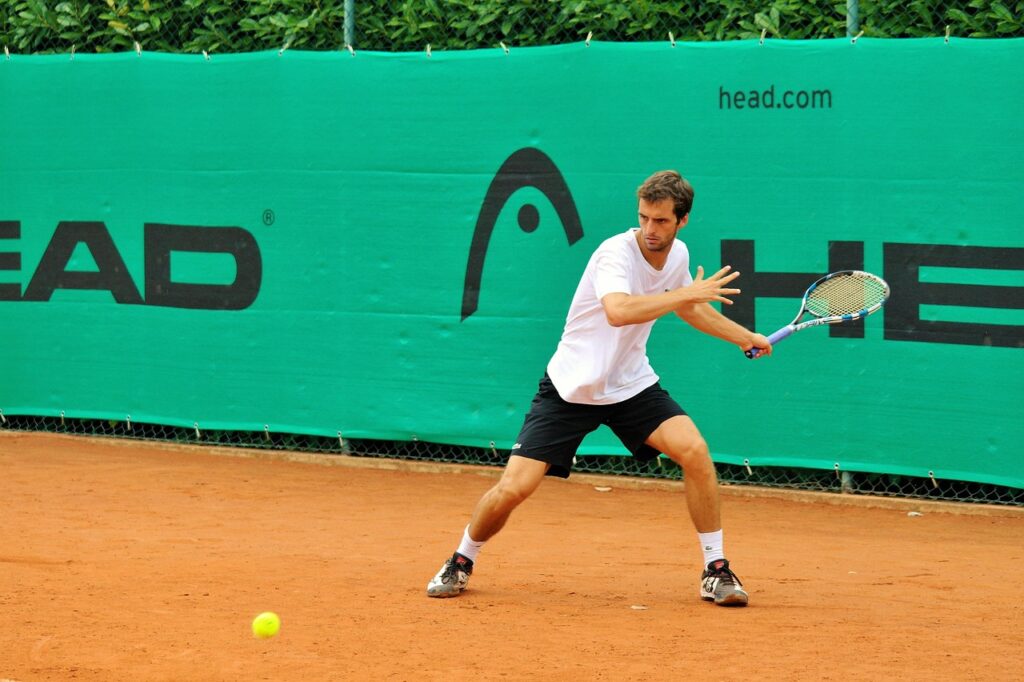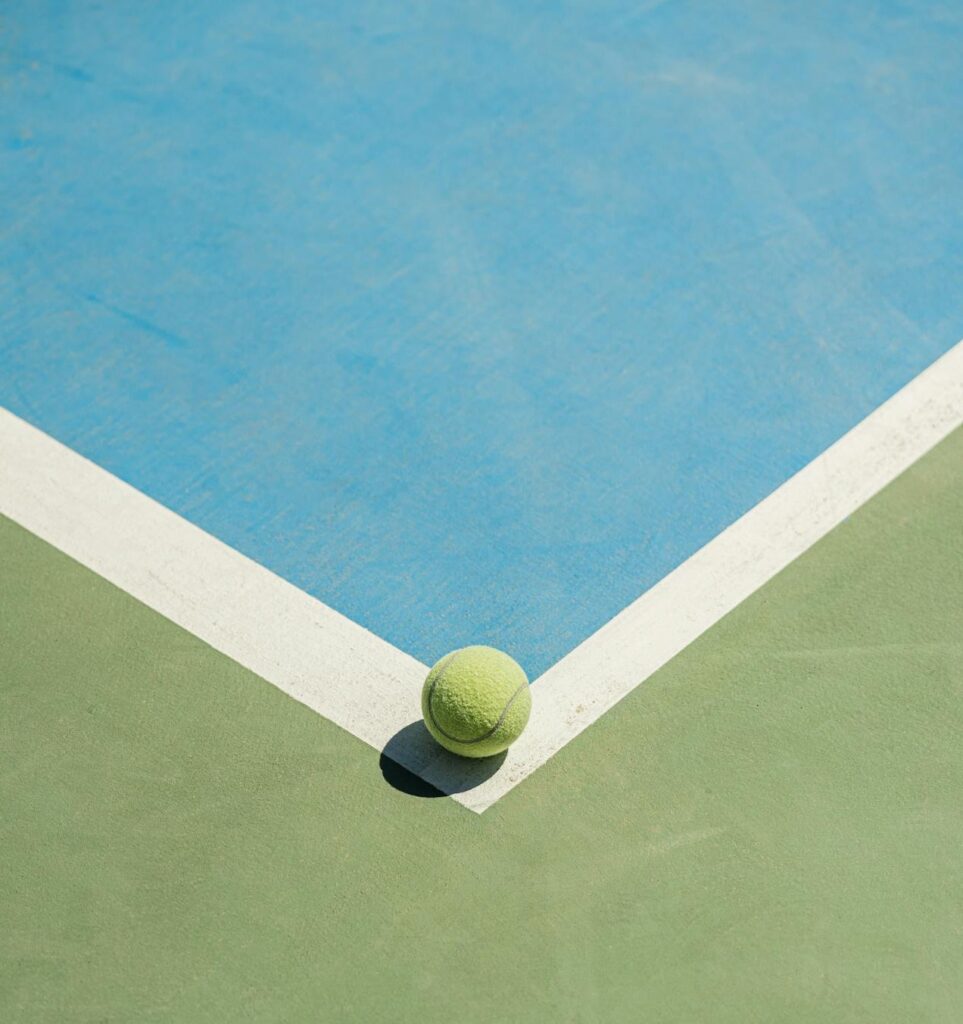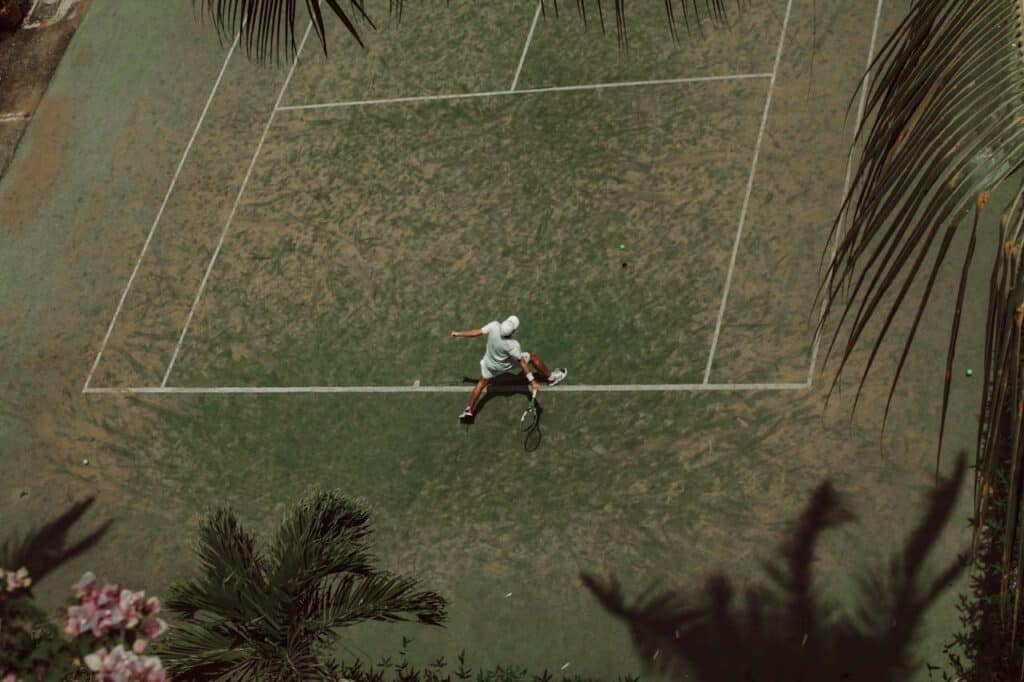Your Perfect Match: A Guide to Choosing the Right Tennis Court Surface
There’s a special kind of excitement that comes with the pristine lines and vibrant colors of a tennis court. It’s more than just a playing surface; it’s a place for exercise, competition, and lifelong memories.
As an asphalt company that builds these incredible spaces, we know that the surface you choose is the single most important decision you’ll make.
It affects everything from the speed of the game to player safety, maintenance needs, and overall aesthetics.

If you’re considering installing a new tennis court on your property, we’ll walk you through the most popular surface types, breaking down their benefits and drawbacks.
Hard Tennis Courts
Hard courts are, without a doubt, the most common type of tennis court in the United States, and for good reason.
A hard court consists of a base layer of asphalt or concrete.
This strong, stable foundation is then covered with several layers of acrylic surfacing, which is what gives the court its vibrant color and specific playing characteristics.
The court’s bounce can be adjusted by the amount of sand mixed into the acrylic paint, with more sand creating less bounce, while less sand has more bounce.
They are versatile and offer a balance of consistent play, durability, and relatively low maintenance.
Pros of Hard Courts
- Consistency: Hard courts provide a true, consistent bounce that players of all skill levels appreciate. The ball’s reaction is predictable, making it an excellent surface for developing a well-rounded game.
- Durability & Low Maintenance: Built on a solid foundation, hard courts are incredibly durable. They are resistant to weather and heavy use, and their low maintenance needs make them a popular choice for both residential and public facilities. Routine cleaning and periodic resurfacing (typically every 5-8 years) are generally all that’s required.
- Versatility: Hard courts can easily be painted for other sports, making them a fantastic multi-purpose surface for basketball, pickleball, and other activities.

Cons of Hard Courts
- Physical Impact: The rigid surface can be tough on players’ joints, especially knees, ankles, and backs. This can be a concern for older players or those with existing injuries.
- Heat: Acrylic surfaces can absorb and radiate a significant amount of heat on sunny days, making them hotter to play on than other surfaces.
Clay Tennis Courts
When you think of clay courts, you might picture the French Open at Roland Garros and the legendary Rafael Nadal.
Clay courts are a world away from hard courts, offering a unique playing experience that favors strategic, defensive play and long, grueling rallies.

These courts are made of crushed stone, shale, or brick, which is spread over a sub-base. The loose top layer of clay slows the ball down and produces a high bounce, completely changing the dynamic of the game.
Players often slide into their shots, a key feature of clay-court tennis.
Pros of Clay Courts:
- Low Impact: The soft, forgiving surface is much easier on the body, making it a great option for players concerned about joint health or those who want to play more frequently without the wear and tear.
- Slower Pace: The slow, high bounce of the ball leads to longer rallies and more strategic play. This favors players with powerful groundstrokes, excellent defensive skills, and a high level of endurance.
- Cooler Surface: Clay courts absorb less heat than hard courts, making them a more comfortable option for playing in direct sun.
Cons of Clay Courts:
- High Maintenance: Clay courts require a significant amount of daily maintenance. They need to be raked after every use to smooth out footprints and scuff marks, and the surface must be watered regularly to maintain its integrity and prevent cracking. This is a considerable commitment of time and resources.
Weather Dependence: Clay courts are highly susceptible to weather. They are unplayable during or immediately after rain until the surface has dried and been reconditioned. They also cannot be used in freezing climates, as the water content will freeze and destroy the court.
Grass Tennis Courts
Grass courts are the traditional, fast-paced surface of tennis, famously featured at Wimbledon. A grass court consists of a specially prepared soil base with a specific type of grass grown over it, which makes for a challenging surface to play on, with a quick and low bounce.

The bounce is also highly unpredictable, depending on the health of the grass, how recently it was mowed, and the amount of wear and tear.
Pros of Grass Courts:
- Fast-Paced Action: Grass courts are the fastest surface in tennis, favoring players with powerful serves and a “serve-and-volley” style of play. Points are typically short, sharp, and exciting.
- Low Impact: The natural grass surface is gentle on a player’s body, providing a cushioned feel.
- Prestige and Aesthetics: There is an undeniable sense of tradition and prestige associated with a grass court. They are beautiful to look at and offer a playing experience unlike any other.

Cons of Grass Courts:
- Extremely High Maintenance: This is the most significant drawback. Grass courts require daily, year-round maintenance, including mowing, watering, fertilizing, and rolling to keep them in playing condition. This makes them prohibitively expensive and time-consuming for most residential or even club settings.
- Weather and Durability: Grass courts are highly sensitive to weather and are unplayable when wet. The surface also shows wear and tear very quickly and can be damaged easily by heavy use.
Key Factors to Consider
With all these options, how do you decide which type of court is right for you? It ultimately comes down to a few key factors that are unique to your situation.
- Budget: The initial construction cost is a major consideration. Hard courts built on asphalt are often the most affordable option, while grass courts are the most expensive. But don’t forget to factor in long-term maintenance costs. A clay court might be less expensive to build, but its high daily upkeep can add up over time.
- Playing Style: Do you prefer a fast-paced game with powerful serves, or do you enjoy longer rallies and strategic baseline play? Your preferred style should heavily influence your choice. Hard courts offer a balanced, medium-speed game, grass is for the fast hitters, and clay is for the strategists.
- Climate and Location: Your local climate is a huge factor. Clay courts are not a good choice for areas with harsh winters and freeze-thaw cycles. Grass courts require a specific climate and constant watering. For our clients in the greater Lancaster, PA area, hard courts are typically the most practical and durable choice, as they can withstand a wide range of weather conditions and can often be used year-round.
Maintenance Commitment: Be honest with yourself about the time and resources you’re willing to commit to maintenance. If you want a court, you can simply play on with minimal upkeep; a hard court is your best bet. If you’re passionate about the game and willing to invest the time, a clay court might be for you.
Making Your Vision a Reality with Lancaster Asphalt Systems
Building a tennis court is a significant project, and getting it right from the ground up is essential for longevity and player satisfaction.
As an asphalt company, we specialize in laying durable, high-quality asphalt foundations that are the backbone of most hard courts.
Our expertise ensures a perfectly graded, stable base that will resist cracking and provide a consistent surface for years to come.
We also have the knowledge and experience to install the top-tier acrylic surfacing, giving you a beautiful, professional-grade court that can be customized to your specific speed and color preferences.
Whether you’re a casual player looking for a multi-purpose court for the family or a serious enthusiast who wants a professional-grade playing surface, we’re here to help you navigate the choices. Your perfect court awaits, and we’re the team to build it for you.
Ready to bring your vision of the perfect tennis court to life? Don’t let the variety of options overwhelm you.
Our team of experts is here to guide you through the process, from choosing the right surface to a seamless installation.
Contact Us Today and let’s get started on building the court of your dreams.
